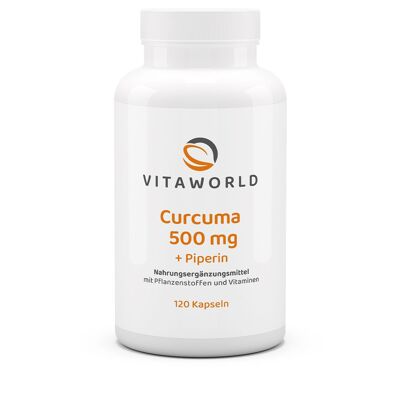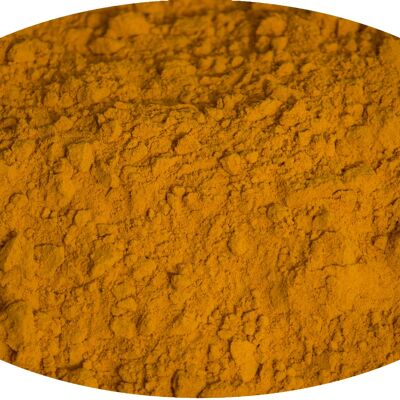

Turmeric, ground 4-5.5% curcumin
This turmeric contains 4-5.5% curcumin, which is significantly more than most commercially available varieties. Curcumin is the phytochemical of turmeric and gives the spice its rich color and is crucial to turmeric's other effects. Research even extracts the curcumin for clinical trials. Turmeric (curcuma) is one of the oldest known spice plants in Asia. Already about 10,000 years ago, after people in India settled near the big rivers and started using plants through agriculture, more and more herbs, roots, bark and fruits of numerous plants were used in the preparation of food. Around 5,000 years ago, turmeric rose to become one of the most important Indian spices. At the beginning of the 14th century, the Venetian trader Marco Polo brought the yellow powder back from Southeast Asia from one of his travels. The characteristic bright, intense yellow of turmeric has given the root numerous names (yellow root, saffron root, Indian saffron, yellow root) and is now often used in the food industry as a natural coloring for pasta, mustard or rice dishes. Turmeric powder, which belongs to the ginger family, gives curry mixtures their typical color. Turmeric tastes mildly spicy, woody-floral, earthy, with a slight bitter note. Originally, the turmeric powder was also of organic quality, but it loses this standard when it is decanted in our factory, as we do not have our own organic certificate.
Bergische Gewürzmanufaktur store also offers


Cayenne Chili (cayenne pepper), ground

Paprika powder, smoked sweet

Trikatu - "The Three Sharp Ones"

Lindesa Klassik skin protection and care cream with beeswax, 60 ml PE tube

After Birth – Vegetable mix for a postpartum soup

Long pepper - pipali, ground

Spleen Qi Deficiency Tea
Products you may like

Turmeric Premium 400 g

Turmeric Premium

Turmeric 500 mg (120 caps)

Turmeric ground (organic & raw) 55 g

